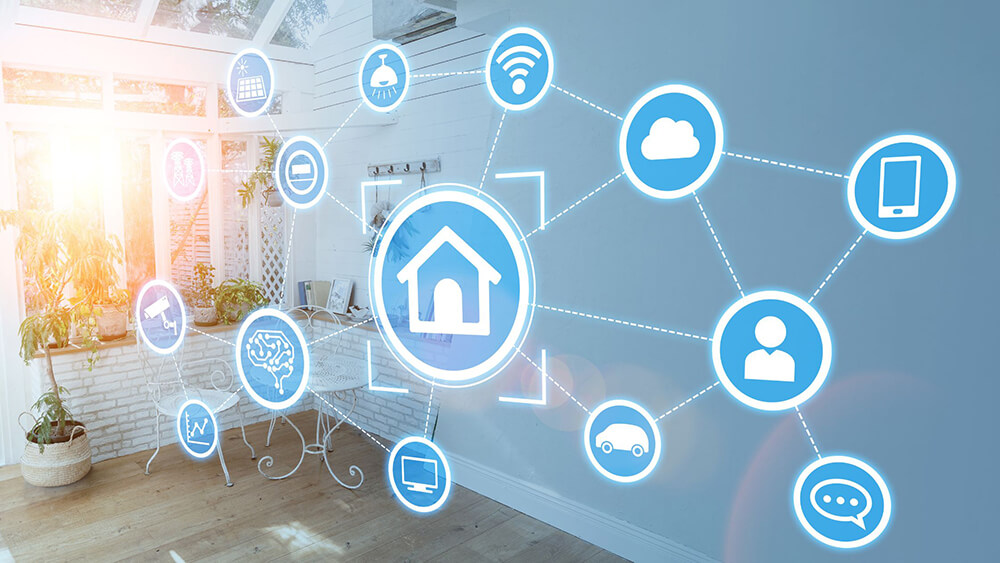Home / Handy Tips /
We now live in a world of smart homes and smart devices, relying increasingly on automation technology. This is where Zigbee plays a crucial role. But what is Zigbee? This article looks closely at Zigbee, how it works, and its benefits for creating a smart home. You’ll also discover the various devices that utilise Zigbee, and practical tips on setting it up and optimising it for home automation.
What is Zigbee exactly?
If you’re planning on setting up a smart home, you’ll want to control devices like smart locks, sockets, lights and more wirelessly. Zigbee is a wireless protocol that allows smart home devices to communicate with one another using a Personal Area Network (PAN ).
Although you can use a PAN as-is to perform simple automation tasks in the home, such as switching on a light without leaving your seat, without something like Zigbee, your home automation system won’t be particularly “smart”. However, when you connect the Zigbee network to a smart home controller, you’ll unleash the ultimate potential of home automation.
Zigbee is similar to other competing protocols such as Wi-Fi, Bluetooth, Matter and Z-Wave, but with some differences.
How Zigbee works
It’s a low-cost, low-power wireless mesh network, and an open standard designed to support the widespread creation of devices used for wireless control and monitoring applications. By way of a radio transceiver, Zigbee devices can all communicate with one another by sending and receiving data. One Zigbee device can also copy and send a message to another Zigbee device. This allows you to link all devices to a central hub, and all devices can still communicate with that central hub even when out of range.
Devices using Zigbee technology provide a stable, durable, and autonomous system. When focusing on particular functions like motion detection or light dimming, Zigbee devices are considerably simpler than those using other protocols like Z-Wave. This is because Zigbee devices don’t try to jam a lot of functionality into a single device.
The advantages of using Zigbee
We’ll now look at why you should consider Zigbee for your smart home and the benefits.
It’s affordable
Compared to other smart technologies like Z-Wave and Matter, overall, Zigbee devices are very affordable.
Mass capacity
Did you know that Zigbee supports up to 65,000 devices on a single network? That sounds like overkill for any home, but at least you know you can control all your devices on one network, rather than setting up and managing multiple networks.
Zigbee is secure
It’s extremely secure and utilises the same type of encryption as online banking services – 128-bit AES encryption.
Low power requirements
Zigbee devices enjoy up to 10 years of battery life.
Multiple lighting options
There are far more options for lighting control with Zigbee than any other smart home protocol. Zigbee technology specialises in lighting, including colour-changing LED strip lighting, light switches, dimmer controls, LED bulbs and more.
Connect to the web
When you connect Zigbee to the internet, you can then use your phone as a remote, allowing you to control your Zigbee devices even when you’re not at home.
Flexibility
Zigbee supports a variety of network topologies such as mesh, point-to-point, and point-to-multipoint networks.
Software upgrade feature
The Zigbee Over-the-Air (OTA) software upgrade feature is a powerful tool. It allows the updating of firmware on all connected devices via a single device. This ensures customers are always using the latest and most secure version.
What devices use the Zigbee protocol?
Hundreds of respected manufacturers provide thousands of different devices that use Zigbee, so you’re sure to find all the devices you require. Here are just a few to give you an idea:
- Door locks
- Garage door controls
- Lights
- Smoke detectors
- Alarms
- Thermostats
- Door sensors
- Motion sensors
- Remote controls
- Appliances
- Smart screens
- Smart speakers
- Utility meters
- And more…
What do you need for a Zigbee network?
Zigbee Coordinator (ZC)
This is a smart home controller (or hub). Its primary task is to establish the network, maintain security, and manage communications between devices. Note that you can’t use multiple coordinators in a Zigbee network.
Zigbee Router (ZR)
The router is the spine of the Zigbee network and provides direct communication between all connected devices. Many items can function as routers in the network, including sockets, plugs, light switches, appliance modules and more. A smart device that functions as a router must be AC mains powered.
Zigbee End Device (ZED)
End devices are the simplest form of network device. Limited to sending and receiving data only, they can’t perform routing functions. Their only mode of communication is through Zigbee Coordinators or Zigbee Routers. End devices, which include motion sensors, door sensors, temperature sensors, and door locks, are often battery-operated.
How to get started with Zigbee
Designed to be simple, getting set up with Zigbee is not hard. Let’s cover the basic steps:
- Buy a smart hub. Some examples are Homey Pro and Homey Bridge.
- Choose your Zigbee devices. It’s advisable to use a Zigbee device every 10-20 metres for optimum results.
- Set up your hub according to the manufacturer’s instructions.
- Now plug in and connect all your Zigbee devices to the central control hub.
Home networking services in Melbourne
At Computer Cures, we specialise in setting up all types of home networks in Melbourne. If you want to include Zigbee in your smart home automation but are not confident in setting it up, contact us and we’d be happy to do it for you. Likewise, get in touch for all your home networking requirements and our technicians will have you up and running in no time.









Leave A Comment